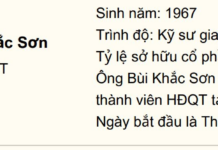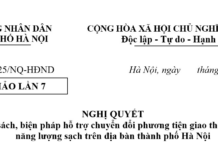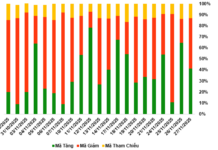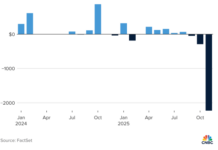In the province of Ninh Thuan, numerous wind turbines worth tens of billions of VND per turbine remain idle despite being ready to connect to the power grid. It is noteworthy that there is a risk of power shortage in the country’s renewable energy capital, especially during the current dry season peak.
Idle for many years
According to statistics, the entire Ninh Thuan province has 14 potential wind areas with an average wind speed of 9.6 m/s at a height of 6.5 m, blowing steadily throughout the year. Favorable natural conditions and encouraging policies for renewable energy have made Ninh Thuan a hub for numerous clean energy projects. However, driving along National Highway 1 through Thuan Bac district, reporters noted dozens of wind turbines exposed to the elements, unable to generate electricity for the national grid.
Upon investigation, it was revealed that this area is where the Hanbaram Wind Power Plant project of Hanbaram Wind Power Joint Stock Company is being implemented with a capacity of 117 MW. Construction began in October 2020, and the project completed the installation of 29 wind turbines, power lines, and a transformer station in October 2021. However, to date, only 6 out of 29 wind turbines have been commercially operated with preferential prices (FIT) according to Decision 39/2018 of the Prime Minister, equivalent to 24 MW. The remaining wind turbines cannot be connected to the grid due to the lack of a power purchase agreement with Electricity of Vietnam (EVN).
According to incomplete statistics, Ninh Thuan province has 46 wind and solar power projects with a total capacity of 3,079 MW that have been completed. Of these, only 2,831 MW have been recognized for commercial operation, generating electricity for the national grid. Notably, even those projects that have been connected to the grid have faced capacity reductions, causing investors to bear the brunt of loan interest, construction, and operating costs.
To address the interests of renewable energy project investors who have not been able to put their projects into operation before November 1, 2021, the Ninh Thuan Provincial People’s Committee has requested EVN to provide early guidance on negotiating a framework electricity price for transitional projects; coordinate and mobilize maximum power generation capacity to avoid waste; and support resources in areas where power shortages still occur. Additionally, the province has also requested that the central government study and decentralize authority to local authorities to convert forest land to other land types for the implementation of power transmission infrastructure projects.
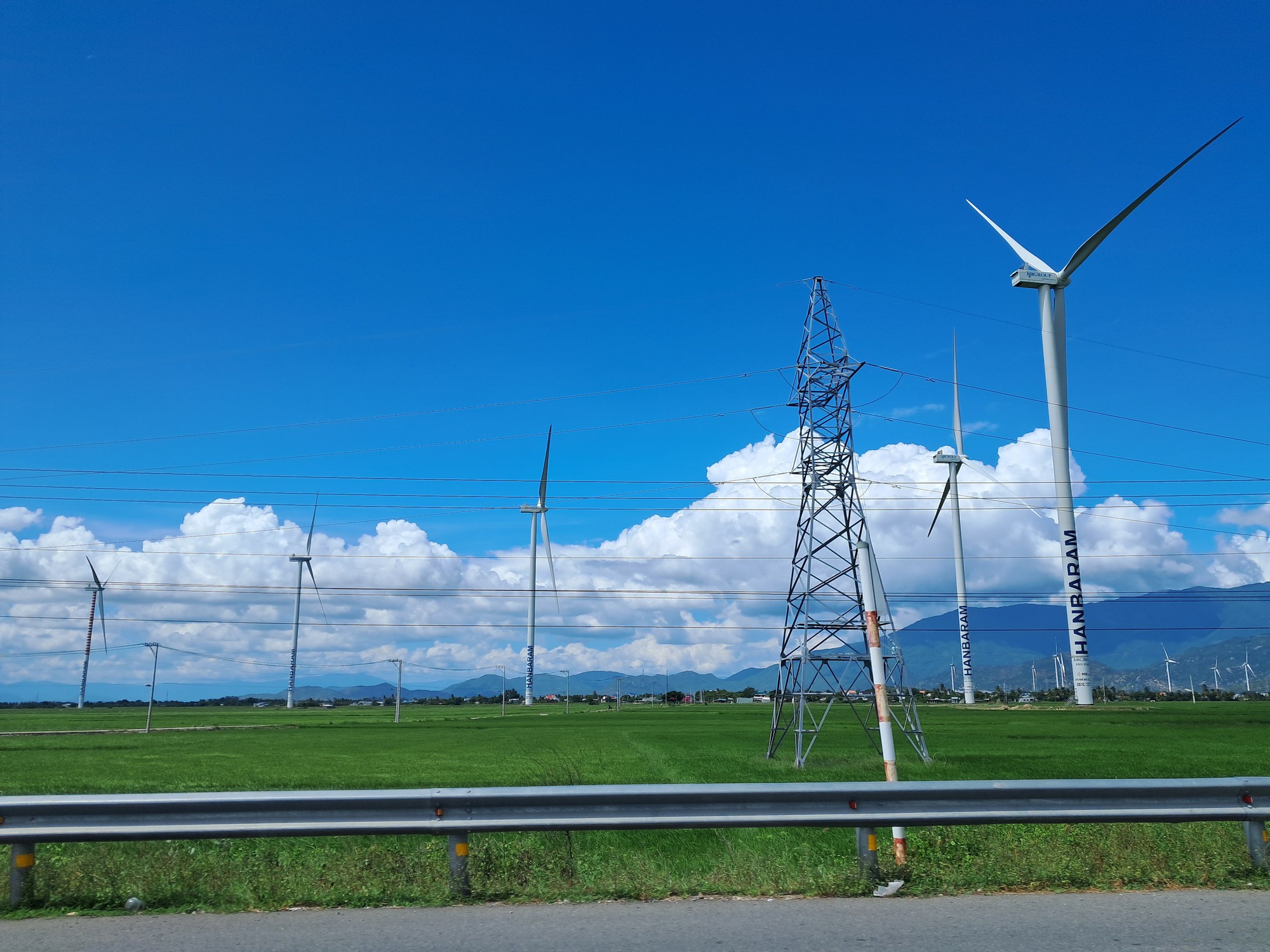
Wind turbines of the Hanbaram Wind Power Plant project in Ninh Thuan province are standing idle. Photo: CHAU TINH
Zero-cost rooftop solar power: Many concerns
In the context of many localities across the country facing the risk of power shortages during the hot and sunny season, the draft Decree on the mechanism and policies to encourage the development of self-production and self-consumption rooftop solar power (RTSP) that the Ministry of Industry and Trade is seeking feedback on has met with mixed reactions. This mechanism has been awaited since 2021, after Decision 13/2020 of the Prime Minister on the mechanism to encourage the development of solar power expired. At that time, EVN announced that it would stop connecting and signing contracts to purchase electricity from RTSP systems developed after December 31, 2020.
With this latest draft, individuals and organizations interested in investing in RTSP have raised numerous concerns, primarily the provision that surplus solar power fed into the grid will be at a price of 0 VND. Mr. Tran Trung Duc (residing in Hoang Mai district, Hanoi) shared that his family had considered investing in an RTSP system, but they are still hesitant due to the unclear and unstable mechanisms and policies. Mr. Duc calculated that the installation of a 5 kW household RTSP system with a 5 kWh storage device would cost around 80 – 90 million VND. If the storage battery is 10 kWh, the total cost would be approximately 150 million VND. With the surplus electricity, if it cannot be sold back to EVN, the investment would not be cost-effective.
According to the Ministry of Industry and Trade, the development of RTSP aims to meet the growing demand for clean electricity and utilize Vietnam’s abundant renewable energy resources. The government encourages the development of self-produced and self-consumed solar power and provides customers with the choice of connecting to the grid or not.
Mr. Tran Viet Hoa, Director of the Electricity Regulatory Authority under the Ministry of Industry and Trade, acknowledged that every policy has two sides and depends on the specific conditions at the time of its issuance. For RTSP sources that are connected to the grid, he believes that self-production and self-consumption should be encouraged, and feeding into the system should not be incentivized. “RTSP feeding into the system not only does not align with the criteria of self-production and self-consumption but also incurs increased costs for the operation of the electricity system,” emphasized Mr. Hoa.

EVN recommends using electricity sparingly to avoid high billsREAD NOW
Director Tran Viet Hoa pointed out that the distributed nature of RTSP is a limitation, making it difficult to collect data and control for the purpose of operating the electricity system. To balance the capacity of the national electricity system, the regulatory unit must have a system that collects capacity data from all electricity sources.
This can only be done for RTSP sources of sufficient scale, such as RTSP at large industrial parks or factories. For small-scale RTSP sources at the household level, this is not feasible; the regulatory authority will only be able to estimate and forecast this capacity. “Data collection and forecasting require a flexible system and incur additional operating costs,” explained Mr. Hoa.
Many projects with violations
In Dak Nong, the Central Inspection Commission recently requested the province to provide documents related to six wind power projects that the Government Inspectorate had previously concluded as having numerous violations.
On May 2, a leader of the Dak Nong Provincial Party Committee’s Office announced that the units are compiling documents and materials to advise and report to the Central Inspection Commission. The Provincial People’s Committee has also instructed relevant agencies to provide the documents for these projects.
Among these, the Nam Binh 1 Wind Power Plant (Dak Song district) with a total investment capital of over 1,000 billion VND was completed in October 2021. However, during the commercial operation trial (COD), the low wind speed and short duration meant that it did not receive recognition according to the FIT price mechanism. The Dak N’Drung 1 Wind Power Plant (Dak Song district) with a total investment of over 3,900 billion VND has only 4 out of 25 turbine towers constructed. Meanwhile, also in Dak Song district, the Dak N’Drung 2 Wind Power Plant has built 21 out of 28 turbine towers, and the Dak N’Drung 3 Wind Power Plant has constructed 23 out of 28 turbine towers. The Asia Dak Song 1 Wind Power Plant alone, with an investment capital of nearly 1,700 billion VND, has not completed land and construction procedures and thus cannot be implemented.
According to the Dak Nong Provincial People’s Committee, after the project owners submitted a request to continue implementing these urgent wind power projects in February 2024, the Provincial People’s Committee reported to the Prime Minister to seek solutions to address difficulties and obstacles.
C.Nguyen












